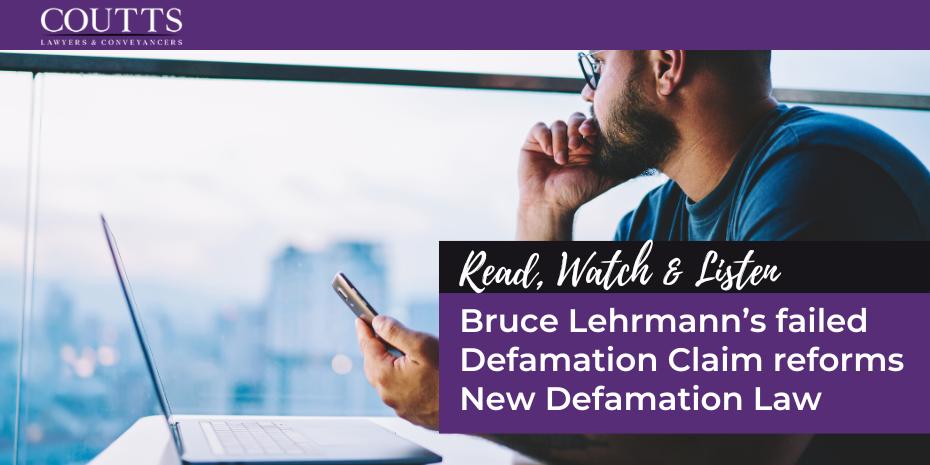KEY TAKE-OUTS:
- It is important to establish a process to manage payments and recover debt
- Being proactive, having terms and conditions in place and keeping good records is key to recovering debt
- There are various steps that can be taken in the debt recovery process depending on the size of the debt, the debtor you are dealing with and what you want to achieve in the process.
- In this blog, we map out the various steps in the debt recovery process and the action that can be taken.
Steps in Debt Recovery
There are various options when it comes to debt recovery depending on the size of the debt, the debtor you are dealing with and what you want to achieve in the process. These are:
DO NOTHING
Unable to recover debt
OR
Letter of Demand
Issue a letter of demand to debtor requesting payment within 7 to 14 days.
OR
Creditor’s Statutory Demand (CSD)
- A CSD can only be issued to a company and are under the Corporations Act.
- A CSD should only be issued if there is no “genuine dispute” in relation to the debt.
- Debtor has 21 days to pay debt.
We discuss the steps in further detail below.
Letter of Demand
Once you have issued a letter of demand to a debtor, there are 3 likely outcomes:
Debtor may contact you to request a payment arrangement to pay the debt.
OR
Debtor may make full payment of outstanding debt.
OR
Debtor may not respond at all
If no response is received, you are then faced with 2 choices:
Do nothing – Unable to recover debt
OR
Commence Court Initiated Claim by way of Statement of Claim in the relevant Court
Jurisdiction of Courts:
- Small Claims division of Local Court < $20,000
- Local Court $20,001 to $100,000
- District Court of NSW < $750,000
- Supreme Court of NSW for all other matters.
- A debtor has 28 days to file a defence to a Statement of Claim
Statement of Claim Proceedings
Once proceedings are on foot, there are 2 scenarios. These are:
Scenario 1 – No defence filed by Debtor
- You can apply for default judgement by way of Notice of Motion.
- Take action to enforce judgement within 12 years of judgment being entered including Notice of Motion-Writ for the Levy of Property or Land, Garnishee orders, examination of the debtor or commencing bankruptcy proceedings.
Scenario 2 – If a defence is filed by Debtor
- Proceedings will commence including the filing of evidence, submissions and a hearing.
- Proceedings will commence including the filing of evidence, submissions and a hearing.
- If judgment made in your favour, you can enforce the judgment by Notice of Motion- Writ for the Levy of Property or Land, Garnishee orders, examination of the debtor or commencing bankruptcy proceedings.
- If unsuccessful in the proceedings, a costs order may be made against you and you will be unable to recover the debt.
Creditors Statutory Demand
Once you have issued a Creditors Statutory Demand to a debtor, there are 4 likely outcomes:
Debtor may make full payment of outstanding debt.
OR
Debtor may contact you to request a payment arrangement to pay the debt.
OR
If no response to Creditors Statutory Demand
Debtor is deemed insolvent.
You can Commence action to wind up debtor- By way of bankruptcy proceedings for an individual or wind up proceedings for a company (liquidation).
OR
Court Application to Set Aside
Debtor may make an application to set aside the creditor’s statutory demand.
To set aside the statutory demand, the debtor must make an application to the Court within 21 days of receiving the demand. The debtor will have to prove to the Court that, more likely than not, it has a defence to the statutory demand. This is done by providing affidavits giving evidence to satisfy the Court that a ‘genuine dispute exists’.
All that is required in order to evidence a ‘genuine dispute’ is that the debtor has a ‘plausible contention requiring investigation’, but it cannot be ‘spurious, hypothetical, illusory or misconceived’ (i.e. not fanciful or far-fetched).
The outcome of a Court Application will be one of the following:
If debtor is successful in proceedings and judgement is made in their favour, a costs order may be made against you. Further, the debtor will no longer owe the debt.
OR
If the debtor is unsuccessful in proceedings and judgment is made in your favour, the debtor must pay the debt. If the debtor does not pay, you may commence action to wind up the debtor by way of bankruptcy proceedings for an individual or wind-up proceedings for a company (liquidation).
How we can help!
It is important to establish a process to manage payments and recover debt. Being proactive, having terms and conditions in place and keeping good records are key to recovering debt. The Commercial and Litigation Team at Coutts have vast experience in debt recovery matters and can assist you to make the right decision when it comes to recovering your debts. If you are owed money, we can assist you to make a commercial decision as to the most efficient and cost-effective way to recover the debt. Contact our debt recovery team today!
ABOUT MELISSA CARE:
Melissa is a Senior Associate at Coutts Lawyers & Conveyancers working from our Campbelltown Office and has extensive experience in the areas of Civil Disputes & Litigation, Building and Construction Disputes, Commercial Litigation & Employment Law for both corporate clients and individuals.
Melissa holds a Bachelor of Laws, Bachelor of Commerce (Majoring in Marketing), Graduate Law Diploma from the College of Law; and has been admitted to the Supreme Court of NSW and the High Court of Australia.
For further information please don’t hesitate to contact:
Melissa Care
Senior Associate
info@couttslegal.com.au
1300 268 887
This blog is merely general and non-specific information on the subject matter and is not and should not be considered or relied on as legal advice. Coutts is not responsible for any cost, expense, loss or liability whatsoever to this blog, including all or any reliance on this blog or use or application of this blog by you.




